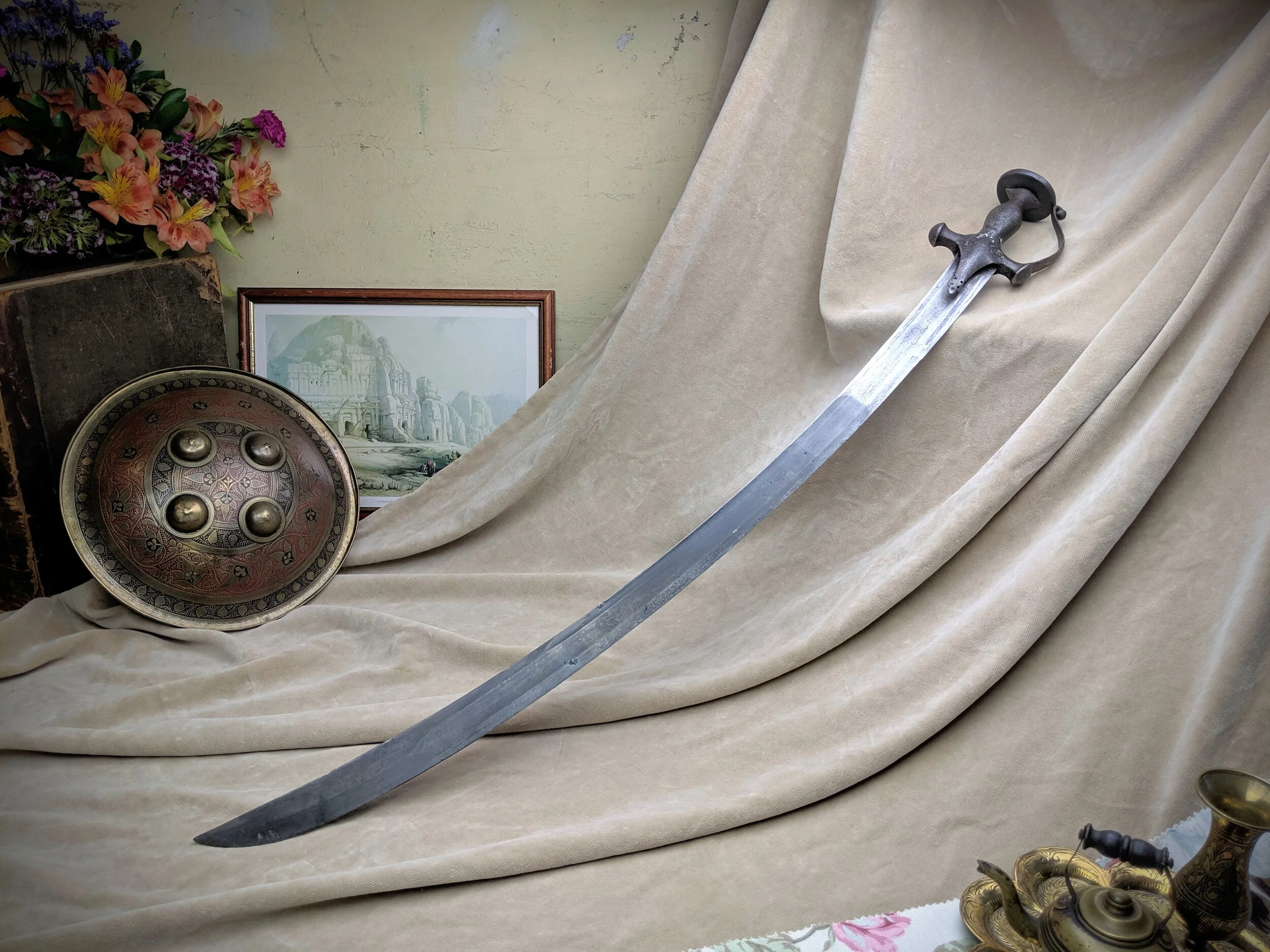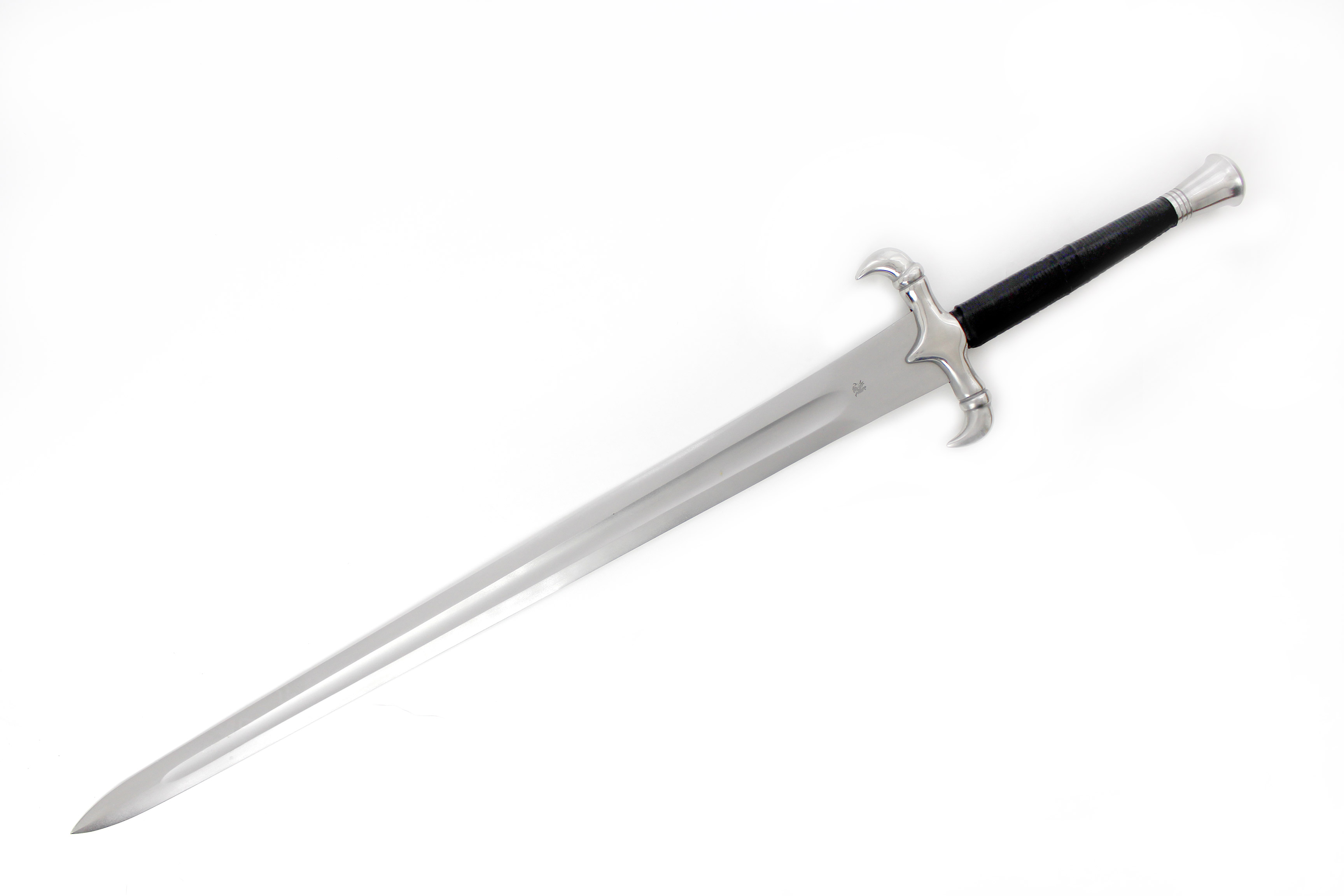Sword Classification
Sword definition – Swords are often classified based on their blade shape, size, and origin. These factors can influence the sword’s intended purpose, combat effectiveness, and cultural significance.
A sword is a bladed weapon, typically with a straight or slightly curved blade, that is used for cutting or thrusting. The design of a sword varies depending on its intended purpose, but all swords share some common features. These include a hilt, which is the handle of the sword, and a blade, which is the cutting edge of the sword.
Swords have been used for centuries in warfare and self-defense, and they continue to be popular today as collector’s items and for use in martial arts. Like a slot machine , a sword can be a tool for entertainment or a weapon of war, depending on how it is used.
Blade Shape
- Single-Edged: Blades sharpened on one side only, providing greater cutting power but less versatility in thrusting or parrying.
- Double-Edged: Blades sharpened on both sides, allowing for both cutting and thrusting attacks, but requiring greater skill to wield.
- Curved: Blades with a curvature, enhancing cutting power and allowing for a wider range of attacks, but limiting thrusting capabilities.
- Straight: Blades without curvature, providing greater precision in thrusting and parrying, but less effective for cutting.
Size
- Short Swords: Blades under 24 inches in length, designed for close-quarters combat, such as daggers and gladius.
- Long Swords: Blades between 24 and 40 inches in length, suitable for both cutting and thrusting, such as katanas and longswords.
- Great Swords: Blades over 40 inches in length, intended for heavy combat and capable of delivering powerful blows, such as claymores and zweihanders.
Origin
Swords can also be classified based on their region of origin, reflecting cultural influences and specific combat styles:
- European: Straight or slightly curved blades, often with elaborate hilts and complex guards.
- Asian: Curved blades, emphasizing cutting techniques and precise strikes.
- Middle Eastern: Single-edged blades with a distinctive curved design, such as scimitars and falchions.
Sword Hilts
The hilt of a sword is crucial for its handling and combat effectiveness:
- Pommel: The weighted end of the hilt, providing balance and leverage.
- Grip: The section of the hilt where the user holds the sword, typically made of wood or leather.
- Crossguard: A guard that protects the user’s hand from the opponent’s blade, also used for parrying.
- Langets: Side bars that extend from the crossguard, providing additional protection.
Swordsmithing Techniques: Sword Definition

The art of swordsmithing has been passed down through generations, with traditional methods still employed by skilled artisans today. These techniques involve meticulous forging and tempering processes, utilizing various materials to achieve the desired blade characteristics.
Materials
The choice of materials plays a crucial role in determining the strength, flexibility, and durability of a sword. Steel, an alloy of iron and carbon, is the most common material used due to its exceptional hardness and ability to hold an edge. Iron, while softer than steel, is more malleable, making it suitable for shaping and forming the blade.
Forging
Sword forging begins with heating the metal to extreme temperatures, making it pliable and easier to shape. The heated metal is then hammered and manipulated into the desired form, using specialized tools and techniques. This process involves repeated cycles of heating and hammering, gradually refining the blade’s shape and increasing its density.
Tempering
After forging, the blade undergoes a tempering process to enhance its strength and flexibility. This involves heating the blade to a specific temperature and then rapidly cooling it, typically by quenching it in water or oil. The rapid cooling creates a martensitic microstructure within the steel, which increases the blade’s hardness and durability.
Heat Treatment
Heat treatment is a crucial aspect of swordsmithing, as it allows the smith to control the blade’s properties by manipulating its microstructure. Different heat treatment techniques can produce varying degrees of hardness, flexibility, and toughness, depending on the desired characteristics of the sword.
Swordsmanship and Combat Styles

Swordsmanship, the art of wielding a sword, encompasses a diverse array of schools and techniques, each with its own unique principles and strategies. From the elegant footwork of fencing to the powerful strikes of kendo, swordsmanship showcases the pinnacle of human agility, precision, and martial prowess.
Fencing
Fencing, a sport with origins in medieval sword duels, emphasizes quick footwork, precision strikes, and strategic positioning. Fencers use three distinct weapons: the foil, épée, and saber, each with its own rules and scoring system. The sport requires exceptional hand-eye coordination, lightning-fast reflexes, and an acute understanding of geometry and distance.
Kendo, Sword definition
Kendo, a modern Japanese martial art, is derived from traditional samurai swordsmanship. Practitioners wear protective armor and use bamboo swords (shinai) to engage in controlled sparring matches. Kendo emphasizes powerful strikes, footwork, and a strong sense of discipline and respect. The goal is not only to defeat the opponent but also to cultivate self-mastery and inner peace.
Role of Footwork, Timing, and Strategy
In sword combat, footwork is paramount. Agile and precise movements allow swordsmen to maneuver around their opponents, create openings for attacks, and avoid being hit. Timing is equally crucial, as the ability to strike at the right moment can often determine the outcome of a fight. Finally, strategy plays a vital role in swordsmanship, as swordsmen must adapt their tactics to the strengths and weaknesses of their opponents and the specific situation they find themselves in.
A sword, a weapon with a sharp blade, has been a symbol of power and protection throughout history. Today, we may not need to carry a physical sword, but we can still find connections hint today connections hint today that can help us navigate the complexities of life.
Just as a sword can cut through obstacles, these connections can provide us with the strength and guidance we need to overcome challenges and achieve our goals.
A sword, with its gleaming blade and sharp edge, is a weapon of both power and precision. It can cleave through flesh and bone, or be used for more delicate tasks, such as carving or whittling. In the casino pit , where fortunes are won and lost on a roll of the dice, the sword takes on a different meaning.
It becomes a symbol of luck, a talisman that can bring good fortune to its owner.
A sword, a sharp-edged weapon with a long blade, is a symbol of power and strength. But like an umbrella , which protects us from the elements, a sword can also be a tool of defense and protection. In the hands of a skilled warrior, a sword becomes an extension of the body, a weapon that can be wielded with precision and deadly force.
A sword, a weapon of war and art, its blade a dance in the hands of a skilled warrior. Its edge, sharp as the stakes in a casino pit , could turn a life in an instant. But the true essence of a sword lies not in its sharpness, but in the spirit of the one who wields it, for it is an extension of their will, their courage, and their destiny.
